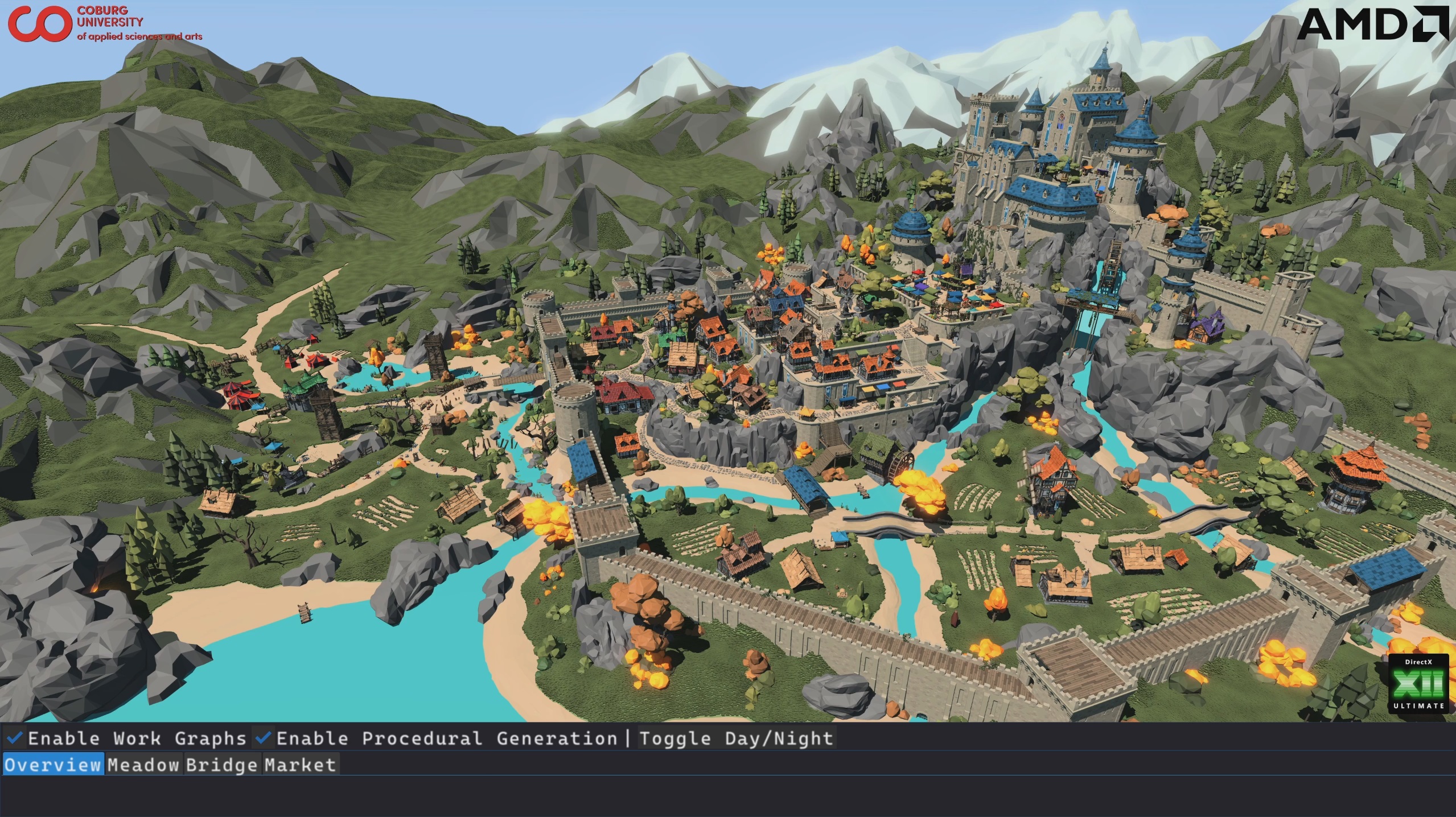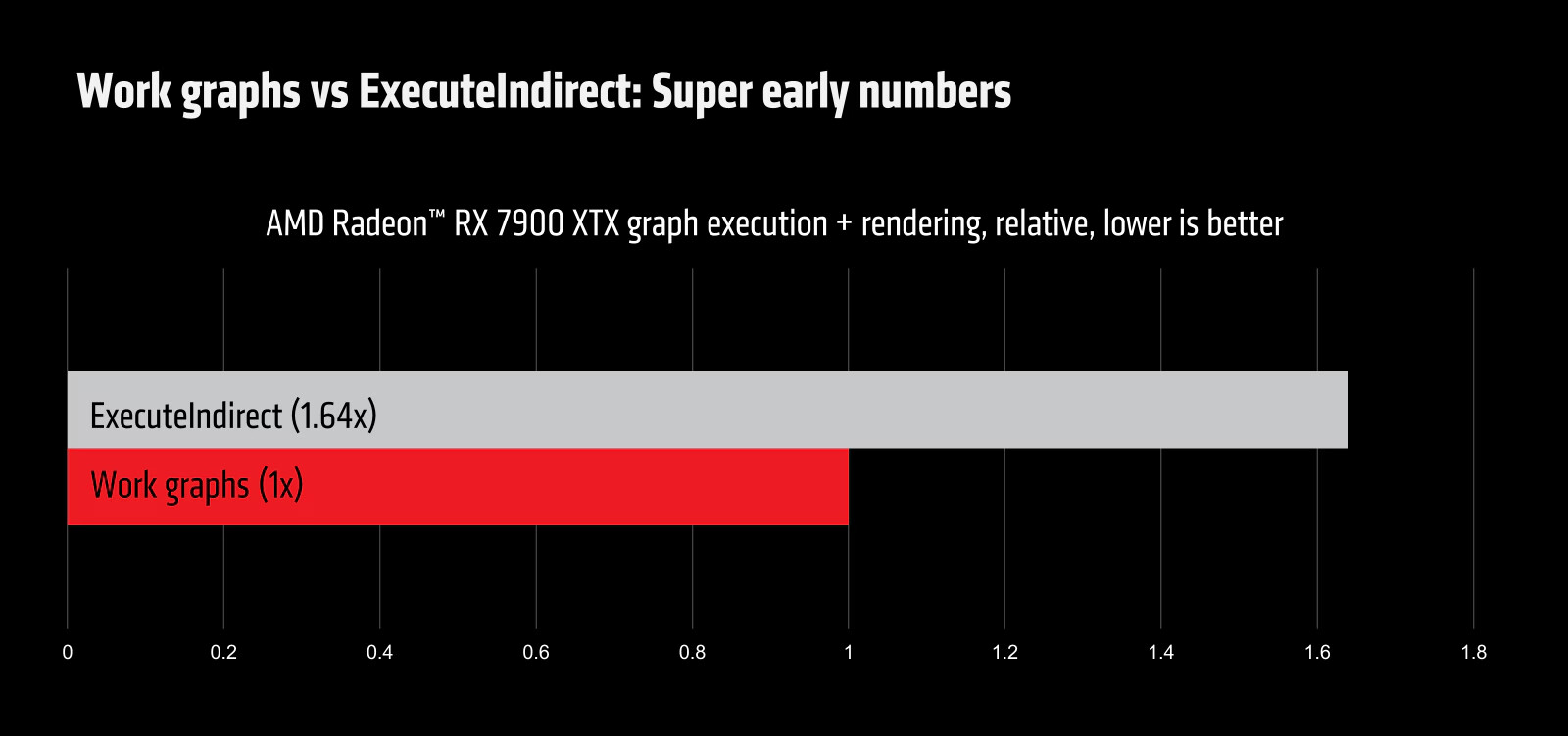AMD showcases HUGE performance gains using Work Graphs with Radeon GPU
AMD highlights 39% performance gains using Work Graphs on a Radeon RX 7900 XTX
Last week, Microsoft revealed Work Graphs, a new technology that allows developers to make games more efficient through GPU-driven rendering. This change allows hardware resources to be utilise more efficiently, and can reduce the GPU strain of rendering workloads. AMD has now showcased a demo of Work Graphs in action using a Radeon RX 7900 XTX. In this demo, their use of Work Graphs enabled a 39% performance increase.
When using “ExecuteIndirect” (no using Work Graphs), this demo ran 64% slower on AMD’s test system. This system features a Ryzen 7 5800X CPU, 32GB of DDR4 memory, and a Radeon RX 7900 XTX.
Below are some stats from AMD’s Work Graphs Demo. This demo was created in collaboration with Coberg University.
- 6600 draw calls/frame (after coalescing)
- 13 million triangles/frame
- 200.000 work items passing through the graph
- 37 nodes and 9 draw nodes
- < 200 MiB of work graph backing store memory
(AMD Work Graph Demo via GPUOpen)
Below is what Prof Quirin Meyer of Coburg University of Applied Sciences and Arts had to say about Work Graphs.
For us, the GPU work graphs API is a major step in graphics programming, especially with the new draw nodes. We wouldn’t want to build anything complex without it anymore! We’re looking forward to applying work graphs to many problems in the graphics space.
AMD’s demo showcases the potential that Work Graphs has to accelerate rendering workloads. Work Graphs and Mesh Nodes are important new features for Microsoft’s DirectX API, and all major GPU manufacturers are now working to support these features in their drivers.
AMD sees the potential of Work Graphs
With GPUs being able to schedule work for itself using Work Graphs, fewer tasks need to go back and forth from CPUs to GPUs. This should free up a lot of CPU and memory overhead, and allow developers to make more creative use of GPU resources.
Features like Work Graphs have the potential to have a dramatic impact on the future of graphics. If nothing else, it will allow developers to more efficiently utilise hardware. At best, it will allow developers to use existing hardware in new ways and make it easier for developers to deliver incredible visuals.
You can join the discussion on AMD’s Work Graphs performance gains using their Radeon RX 7900 XTX on the OC3D Forums.





